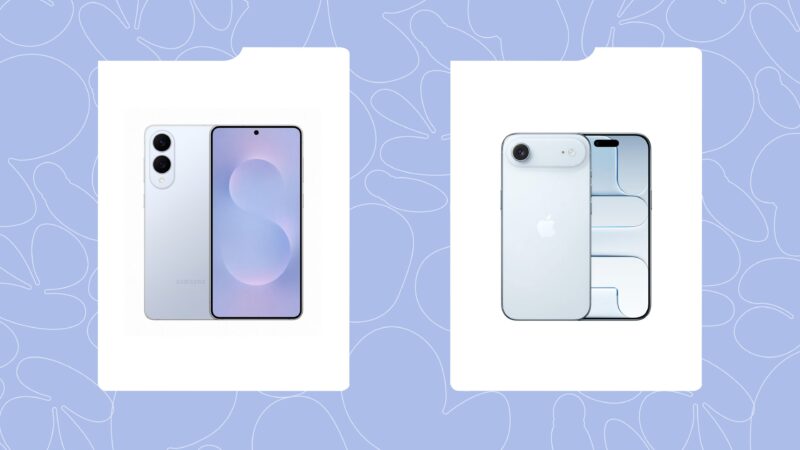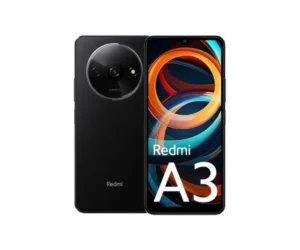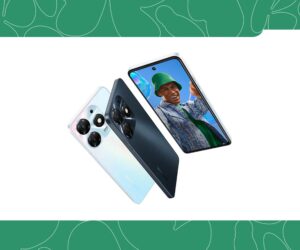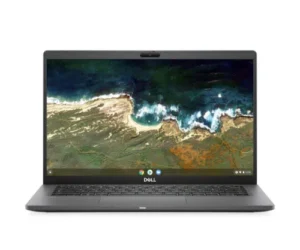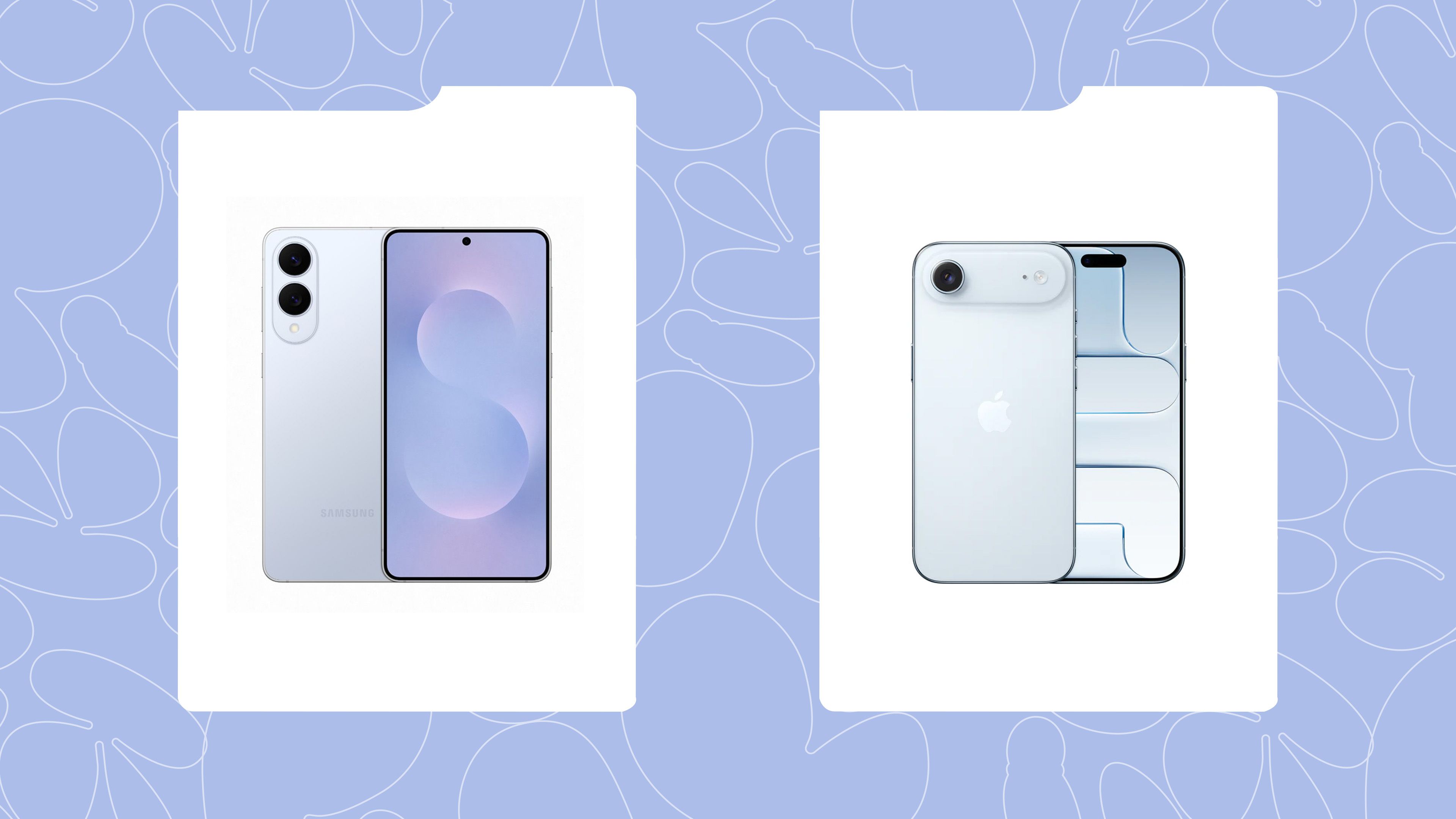
The race to make phones thinner without losing features has never been tighter…literally. The iPhone 17 Air is Apple’s lightest, thinnest iPhone ever, while Samsung’s Galaxy S25 Edge carries its name with a curved display that hugs the hand.
Both are under 6mm thin, both weigh less than most devices you carry around, and both ask you to rethink what slimness in a flagship actually means. But when you put them side by side, which one deserves your money? Let’s break it down.
Read Also: Should You Switch to the Galaxy Z Flip 7? We Weigh the Pros and Cons
Design
The iPhone 17 Air feels almost unreal at 5.64mm thin and 165 grams. Slip it into your pocket and it’s gone. Apple kept its flat design style but dressed it up in titanium, so it looks smooth while staying strong. You also get the Action Button, which is customisable, and Ceramic Shield on the front for scratch resistance.
Samsung takes a different approach. At 5.8mm and 163 grams, the S25 Edge is just as slim, but the curved AMOLED display makes it look more futuristic. That curve isn’t just for show either. It gives the illusion of an edge-to-edge screen that feels immersive in the hand.
If you’re into minimalist designs, Apple wins. If you prefer something that looks more futuristic and playful, Samsung’s the one.
Display
Apple went with a 6.5-inch OLED that pushes 3000 nits of peak brightness, meaning you can still see your Instagram feed clearly under the Lagos sun without squinting. ProMotion keeps the screen refresh rate at 120Hz, so scrolling and gaming stay buttery smooth.
Samsung’s display is where things get dramatic. The 6.7-inch Dynamic AMOLED 2X comes with Quad HD+ resolution (3120×1440), sharper than Apple’s. The curved edges make Netflix binges feel cinematic, and the brightness is not lazy either.
This one’s tough. For outdoor use, the iPhone’s unmatched brightness makes it king. But if you want your phone to double as a mini home theatre, Samsung wins. Call it a draw, depending on how you use your screen most.
Read Also: Apple Unveils the iPhone 17 Air, Its Thinnest iPhone Yet.
Camera
The iPhone 17 Air sticks to a single 48MP rear camera, boosted by Apple’s Fusion AI. It sounds limited on paper, but Apple added neat tricks: dual video capture for vloggers, a square selfie sensor for Instagram-ready shots, and Centre Stage that keeps you framed during video calls. Dolby Vision is also on board, so your videos look polished without much editing.
Samsung packs more hardware. A 200MP main camera, a 12MP ultrawide, and advanced night photography make it a powerhouse for variety. You want sweeping landscape shots? Covered. Shooting at a concert with bad lighting? It’ll still hold up. Samsung also supports 8K video, though most people won’t use it daily.
Samsung wins for versatility. But if you’re a content creator who lives on Reels or TikTok, the iPhone makes the process easier and faster.
Performance and Battery
Inside the iPhone 17 Air is Apple’s A19 Pro chip, which is fast, efficient, and smart enough to run Apple Intelligence features without lag. With a smaller 3,149mAh battery, Apple claims up to 27 hours of video playback, which is solid, but heavy users might want to keep the MagSafe battery pack close.
Samsung went with an octa-core processor that clocks up to 4.47GHz, paired with a 3900mAh battery. On paper, that’s more stamina in a frame that’s just as slim. Samsung promises 24 hours of video playback, and real-world use should feel less stressful when you’re away from an outlet.
Both are manageable at best. However, Samsung has the edge. Apple’s chip is more efficient, but Samsung simply fits in more battery power. If you hate carrying around extra packs, the S25 Edge is the winner.
Software and Ecosystem
Apple runs iOS 26 with Apple Intelligence baked in. The AI features are tightly woven into messaging, email, and photo editing. Add to that seamless pairing with AirPods, Apple Watch, and Mac, and you’ve got a device that feels like part of a lifestyle rather than just a phone.
Samsung counters with Android and One UI, which means flexibility. DeX support turns your phone into a mini desktop if you want split-screen multitasking. You can pair it with the Galaxy Ring or Watch, and you’ve got your smart ecosystem. It’s not as tight as Apple’s, but that’s the point. Samsung lets you customise more.
The winner depends on you. If you’re already an Apple user, the Air fits in perfectly. If you prefer versatility and productivity hacks, Samsung is the better pick.
Also, historically, iPhones tend to hold resale value better, while Samsung gives you more hardware for your money upfront.
Read Also: Is the iPhone 17 the Upgrade iPhone 16 Owners Have Been Waiting For?
The iPhone 17 Air is for people who want style, portability, and a device that doubles as a content-creator tool without fiddling with settings. The Galaxy S25 Edge is for those who want slimness but still crave better battery, camera versatility, and the wow factor of a curved screen.
At the end of the day, the better phone is the one that fits your lifestyle. If you’re deep in Apple’s world, the Air is a natural upgrade. If you want more freedom, bigger cameras, and longer life, the Edge is calling your name.

